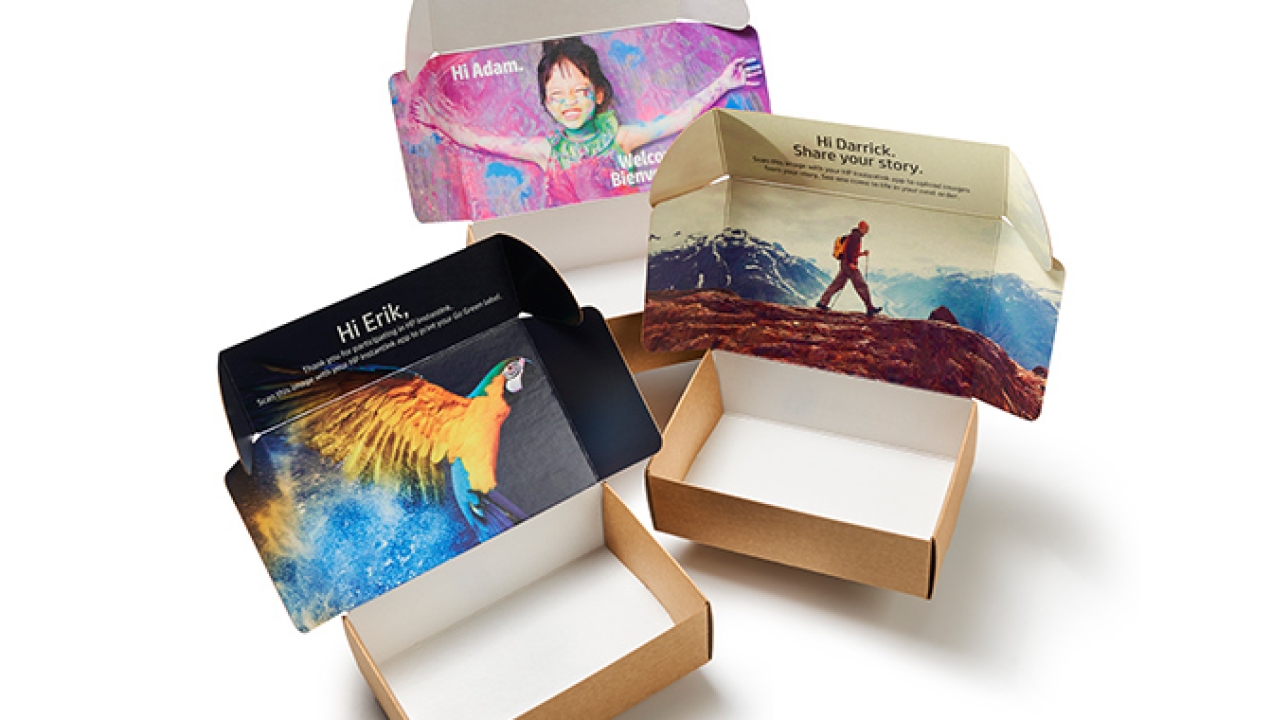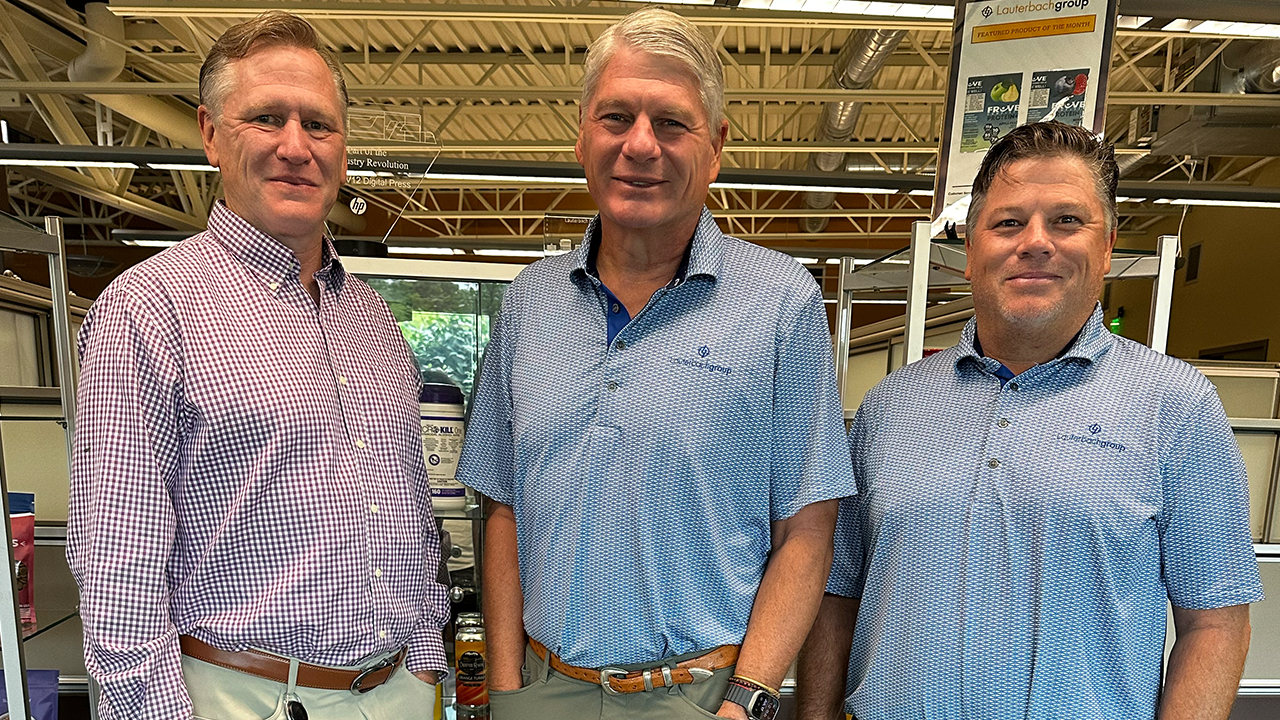Branding and design: Delivery is just the beginning

It’s a trend that began in early March, even before most US states ordered ‘shelter-in-place’ restrictions. The March data shows e-commerce sales in the US up nearly 40 percent year-over-year, and Rakuten Intelligence reports that digital grocery shopping rose more than 200 percent over a three-day period in mid-March. With such a dramatic shift in shopping – and shipping – packaging has become more critical than ever as an extension of your brand.
You might think that once a package arrives at your doorstep, the e-commerce transaction has concluded. On the contrary, delivery is just the beginning of packaging’s potential. Yes, an e-commerce package’s primary responsibility is to ensure your goods arrive in good shape. In fact, off-line shipping is what makes online shopping even possible. And that’s true whether the shipping container is the primary packaging (the product package that we’d see on the retail shelf), or if the shipping container is a secondary or tertiary package. In every instance, the main goal of the shipping container is durability – protecting the product inside.
However, durability isn’t memorable. It’s not typically part of a brand’s ‘story’. And when it comes to e-commerce, packaging has the ability to extend a brand’s story and create a memorable, enticing customer experience. And not just for that purchase – for repeat purchases, too. Conversely, if packaged poorly, and the product arrives damaged, it has the opposite effect on our experience: we may not order from that brand again.
The power of packaging on the customer experience
Products that are packaged thoughtfully, with the consumer experience in mind, have the power to make us feel so good about the brand that we assign even more value to the purchase we made. In other words, our brand experience is intrinsic in the packaging.
This is all very subliminal when we’re shopping in-store. That’s because we’re able to touch, feel and assess the product through its packaging (an experience none of us will take for granted again). But when we’re shopping online, we assess the product through photographs, descriptions and reviews.
When the product arrives, it must meet our expectations from the moment we lay eyes on it. Does the package match the promise? Does it have the same level of simplicity or luxury or authenticity as the product inside? Does it make us feel confident about the product’s quality and the credibility of the company?
From a design perspective, it’s important to remember that every piece of packaging, including the shipping container, is an extension of the brand. Color, logo, typography, images, materials – they must all support the product inside the packaging and match the brand’s positioning and story.
This cohesion, from the images and messages we see on Instagram to the imagery and headlines on a website to the package we receive at our doorstep, builds brand equity and value. When designed and aligned this way, packaging has the potential to significantly influence our experience, our repeat orders, our reviews, even our return rates.
When we’re holding a package in our hands, we’re subconsciously asking: How does it feel? How does it look? Does it reflect the quality of the item I purchased? Is it worth the money I spent? And although we’ve already purchased the product, the e-commerce packaging can impact whether or not we keep the product, return the product, or buy the product again.
And therein lies the power of packaging: does it build brand loyalty, create superfans, or does it become just another forgettable, online transaction?
Sustainability: reputation, responsibility and revenue
Another feature that is essential to e-commerce packaging is sustainability. More than half of consumers say they would pay more for brands that design sustainable, reusable and/or recyclable products, according to an Accenture survey. That desire extends to a brand’s e-commerce packaging, too.
In the past few years, many brands have instituted sustainability policies and goals. In addition to protecting the planet, brands do this to encourage and deepen consumer loyalty. Research shows that consumers will choose a brand that is environmentally responsible over one that is not. That’s a significant realization: consumers will switch brands, and thereby brands will lose customers if they are not actively participating in protecting the environment.
When shopping, consumers ask themselves: Is the packaging recyclable or reusable? Is it renewable and responsibly sourced? And especially during this period of high-volume e-commerce, consumers ask: is the size of the package congruent with the size of what’s inside? Or is there so much packaging that it feels wasteful? (You may have heard about the backlash from environmentallyconscious consumers regarding delivery meal kits.) For brands, e-commerce packaging is about reputation, responsibility and revenue.
Which brings me to personalization. We know through research and focus groups that every demographic is looking for that personal touch, a VIP exclusive brand experience, or super-targeted relevancy.
According to an Infogroup survey of 1,500 consumers, 44 percent said they would switch to a brand that better personalizes its marketing message. Marketers have seen the results: 88 percent of marketers say they have seen an increase in business from personalization. Personalization is no longer a nice-to-have, it’s a must-have. And it’s not just about personalizing the product; here again, e-commerce packaging is a powerful point of personalization.
No demographic craves customization more than millennials, who are now stuck at home, on their phones and tablets, e-buying and wanting brands to get to know them, understand them and cater to their preferences.
Fortunately, digital print means package personalization is absolutely practical on web-to-print, in targeted, omni-channel marketing campaigns and for subscription services. Still, it’s an opportunity that not many brands are taking advantage of – yet.
For example, if I subscribe to StitchFix or Birch Box or even Amazon’s recurring purchases for various goods and sundries, the brand that services my subscription knows they’re sending me a package every month (or every week or six weeks – whatever the subscription term). Why not, then, create a box specifically for me, perhaps with an image that relates to previous purchases or an interest I’ve expressed in some declared data, or even a package with my name on it? Just one simple personalization can vastly improve my unboxing experience. It can influence me to snap a picture, post it on social media, tell my friends, write a review and ultimately drive me to be a loyal fan or a superfan. And all it took was customizing my e-commerce packaging. In that context, the added effort and unit cost is well worth the investment.
Next, consider the opportunity of cross-selling that is inherent in online purchases. The brand already knows what I’m interested in as a purchaser, particularly as a subscription customer. If I’m a subscriber, the brand has ample advance notice that it will be shipping my selected purchase to me. In addition to personalizing the outside of the packaging, why not also personalize the inside? For example, insert samples from other brand products or partners; pack the package with complementary products from sister companies to drive cross-brand awareness; tuck in a personalized note from a brand influencer or company founder. Research shows not only do consumers appreciate this kind of relevant personalization, they have come to expect it.
Can a package increase loyalty?
According to a retail survey by Segment, personalization leads to customer loyalty: 44 percent of consumers surveyed said they would likely make a repeat purchase after a personalized experience. Customer loyalty, in turn, leads to increased revenue: nearly 50 percent of consumers surveyed said they made an impulse buy and/or purchased something more expensive due to a personalized experience. And finally, personalization increases brand value, because when done well, customers feel understood; they feel known, special, exclusive. And first-party data is gold to brands; it enables them to build even more personalized experiences, which in turn drives greater brand affinity and, you guessed it, increased revenue.
Note to remember: done responsibly, consumers believe that the information they’ve provided to the brand gives them a return of value that negates any concerns about privacy.
As onsite retail shopping plummeted almost overnight due to ‘shelter-at-home’ orders, thousands of ‘unessential’ brick-andmortal retailers were forced to close. The unprecedented shift from in-store purchasing to online shopping is likely to become part of our ‘new normal,’ even after the pandemic eases.
With many people feeling isolated, anxious or bored, receiving a package is the highlight of their day. Now is the time for brands and their packaging partners to elevate the e-commerce package and deliver an exceptional receiving experience.
Stay up to date
Subscribe to the free Label News newsletter and receive the latest content every week. We'll never share your email address.


